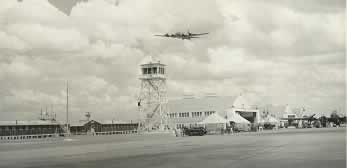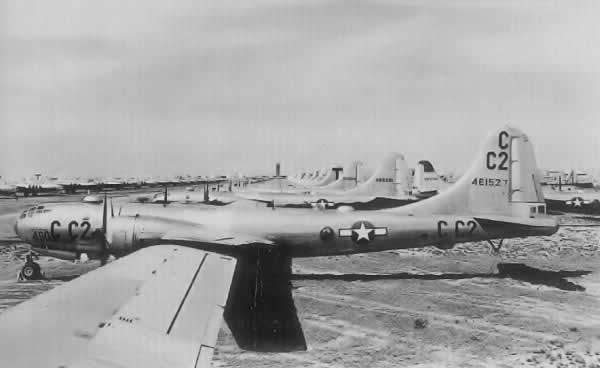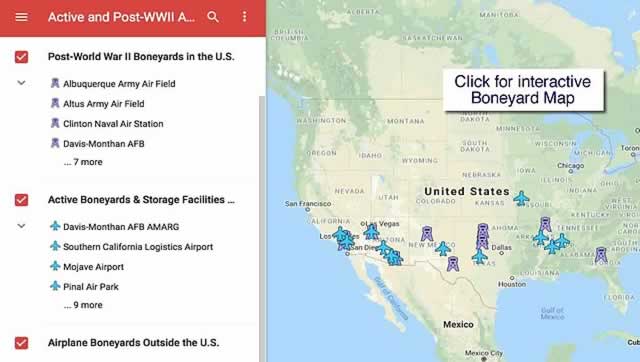
Pyote Army Air Field in Texas ... Rattlesnake Bomber Base
Brief History of Pyote, Texas
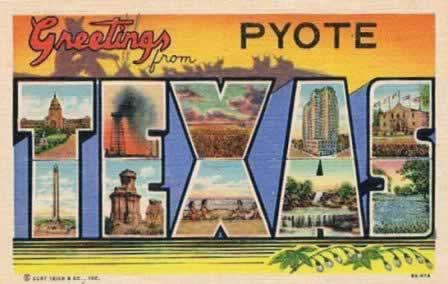 Greetings from Pyote, Texas |
In 1881, before the Texas and Pacific (T&P) Railway laid its tracks through the West Texas area, the company opened a telegraph office at Pyote Tank. The source of the name for the town is disputed - some credit the Chinese railroad workers' pronunciation of "coyote" while others think it was named for the peyote cacti common to the region.
By 1925 the population of Pyote, located in Ward County, was reported at 100 when oil was discovered in nearby Winkler County. By 1928 Pyote became the trading and shipping center for area oil activity, and its population grew to 3,500.
However, the boom ended in the 1930s when the railroad built a spur to Monahans, eliminating Pyote from oilfield shipping. By 1941 the population was reported as 201, supported by 15 businesses. But growth was again to take place in Pyote.
Location of Pyote Army Air Field
 Pyote AAF front gate (Rattlesnake Bomber Base Museum archives) |
Pyote Army Air Field was situated on 2,745 acres of University of Texas land a mile southwest of the town of Pyote, and twenty miles west of Monahans.
It was just south of U.S. Highway 80, west of Midland, east of Pecos, and north of Fort Stockton, and along present-day Interstate 20.
Construction and Usage of Pyote AAF During World War II
Construction of the facilities, including five large hangars, shops, warehouses, and living quarters, began on September 5, 1942. The field featured two runways, each 8,400' in length and 150' feet wide, and a taxiway which formed a triangle. The ramp area was 3,000' by 600'.
Due to the large number of snakes at the site, it was often called "Rattlesnake Bomber Base".
Troops and civilian technicians reported by the thousands, and the population of the base grew steadily to a peak of over 6,500 in October of 1944. Within four months of its opening, the base had become the largest bomber installation in the country.
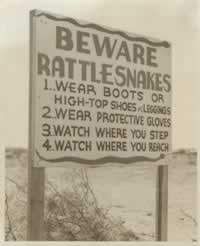 Beware of rattlesnakes! (Rattlesnake Bomber Base Museum archives) |
Pyote trained B-17 Flying Fortress air crews in precision bombing tactics until the summer of 1944, when training switched to the B-29 Superfortress.
Post-WWII Years as Pyote Air Force Base and a Storage Facility
After the war, the renamed Pyote Air Force Base was transferred from the Second Air Force to the San Antonio Air Tech Service Command and became an aircraft-storage depot.
During this time, the base served as a storage facility for as many as 2,000 aircraft (B-29, B-17, B-25, A-26, C-47, and others).
For a while, the B-29 Superfortress "Enola Gay" (Serial Number 44-86292) was stored at Pyote, the aircraft Colonel Paul Tibbets piloted on August 6, 1945 and dropped "Little Boy" over Hiroshima, Japan. Enola Gay was later transferred to the Smithsonian Institution, and is now on display at the Udvar-Hazy Center at Dulles Airport.
Other well known planes stored at Pyote included the B-17 Flying Fortress "Swoose". The aircraft was a B-17D-BO, S/N 40-3097, that saw extensive use in the Southwest Pacific theatre of World War II and survived to become the oldest B-17 still intact. When the decision was made to close Pyote, the Swoose was flown out under its own power.
|
Also stored at Pyote was a Douglas XB-47 Mixmaster pusher-type bomber with dual rear propellers. The Mixmaster was later shipped by train from the base; the wings were smelted at Pyote. Today, the Mixmaster resides at the National Museum of the U.S. Air Force in Dayton awaiting restoration.
In December of 1953, the base went on standby status, staffed by a small caretaker crew to maintain the base.
In April of 1958, the base was reopened as Pyote Air Force Station (TM-186), a radar installation part of series of installations that were an early warning network in case of Soviet air attack. In March of 1963 the Air Force ordered the site to close.
The remaining large hangars gradually disappeared over the years. Today only runways and a few ruins mark the location of the base (see Google map below).
Rattlesnake Bomber Base Museum
An excellent facility exists that documents the construction, operation and history of the base. It includes a wide variety of exhibits, photographs and artifacts from the base.
We encourage you to visit the Rattlesnake Bomber Base Museum, opened in July of 2014, and located at 1500 East Sealy in Monahans, Texas.
Phone the museum at (432) 943-8401 for additional information. And visit the Rattlesnake Bomber Base Museum on Facebook.
Exterior view of the Rattlesnake Bomber Base Museum in Monahans, Texas |
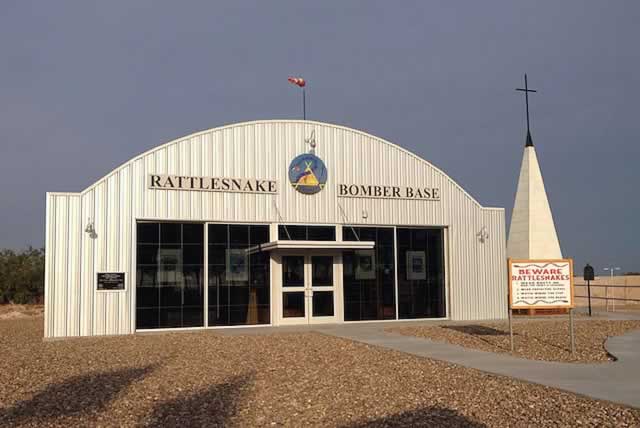 |
Scenes from Pyote over the years ... from the Rattlesnake Bomber Base Museum
Historic Photos of Pyote Army Air Field
Pyote AAF flightline with B-17 overhead (Rattlesnake Bomber Base Museum archives) |
 |
Pyote AAF hangar (Rattlesnake Bomber Base Museum archives) |
 |
Pyote AAF base scene, early days of World War II (Rattlesnake Bomber Base Museum archives) |
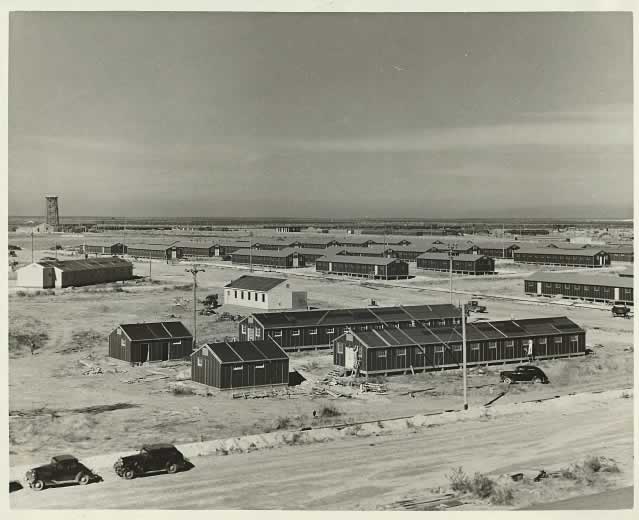 |
B-17 S/N 229546 in flight in the Pyote area (Rattlesnake Bomber Base Museum archives) |
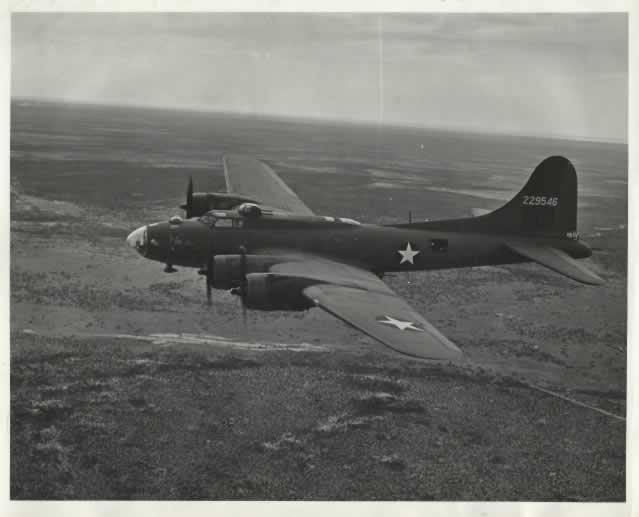 |
Pyote AAF aerial view, circa 1943 (Rattlesnake Bomber Base Museum archives) |
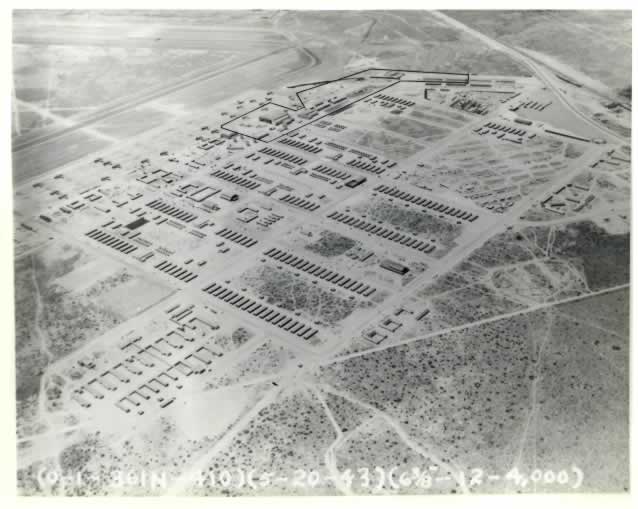 |
|
B-29 Superfortress "Enola Gay" in storage at Pyote post-WWII (Rattlesnake Bomber Base Museum archives) |
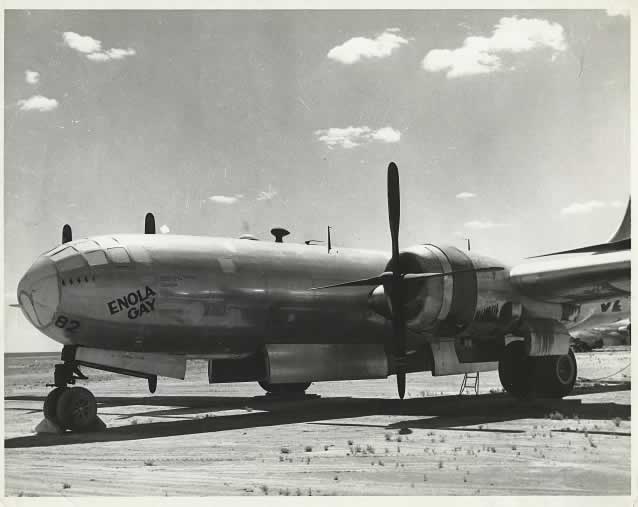 |
B-17 Flying Fortress "Swoose" in storage at Pyote post-WWII (Rattlesnake Bomber Base Museum archives) |
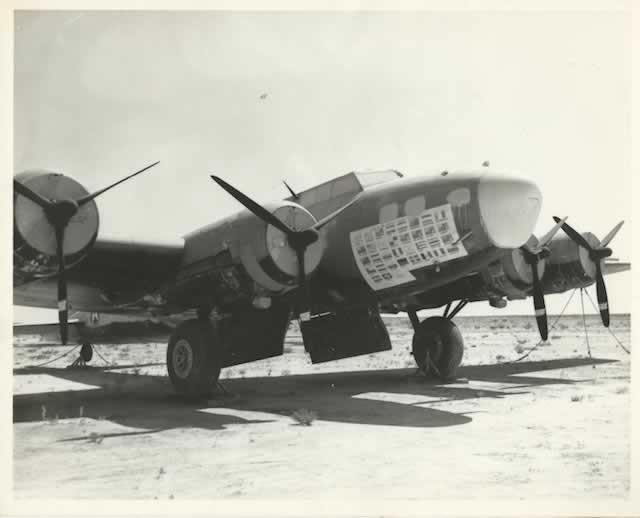 |
Douglas XB-47 Mixmaster in storage at Pyote AFB (Rattlesnake Bomber Base Museum archives) |
 |
BEWARE! Yes, there WERE rattlesnakes in Texas in the early 1940s, and lots of them around Pyote AAF. Thus, the nickname ... "Rattlesnake Bomber Base" (Rattlesnake Bomber Base Museum archives) |
 |
Interactive Map of Pyote, Texas Area
 |
|||
 |
 |
 |
 |
Map of locations of active and post-WWII airplane boneyards and plane storage facilities in the United States
